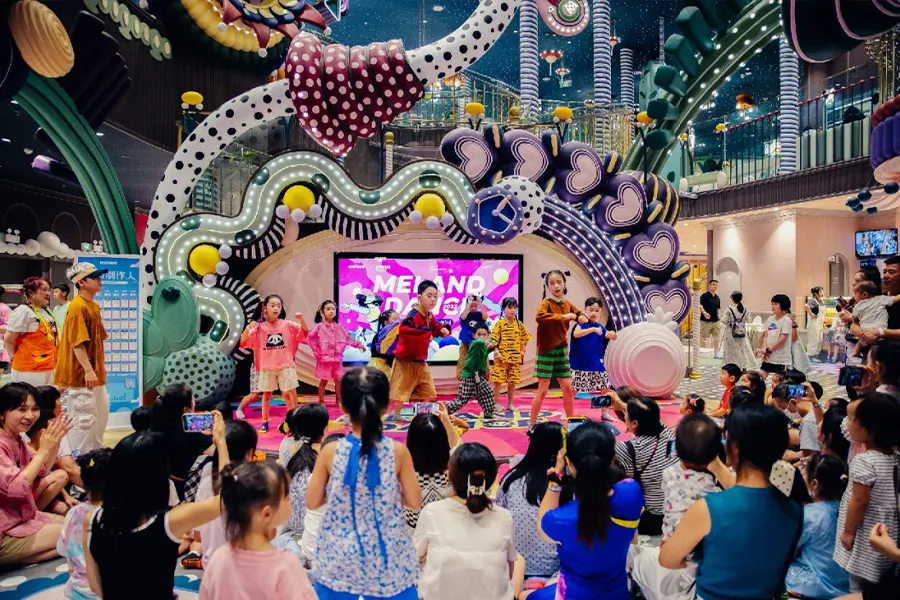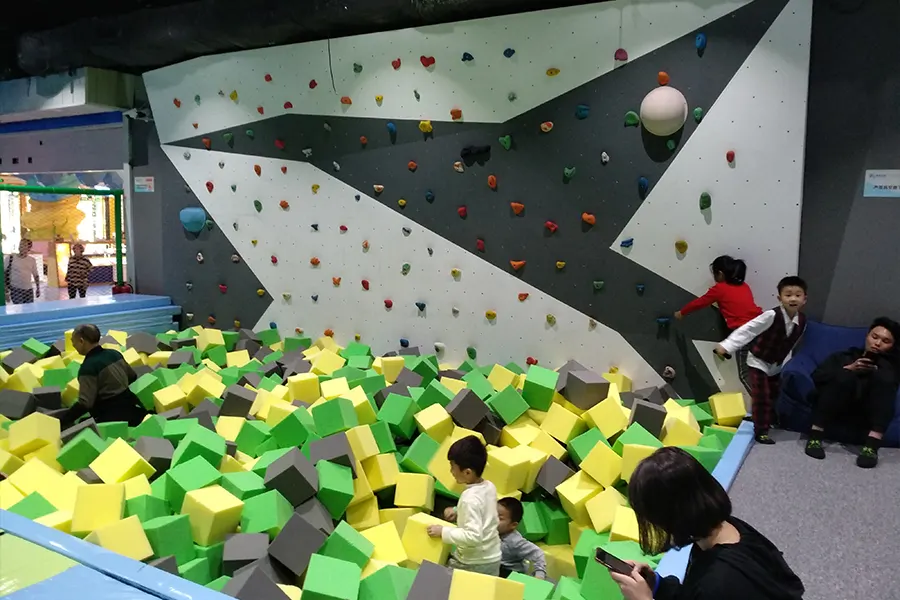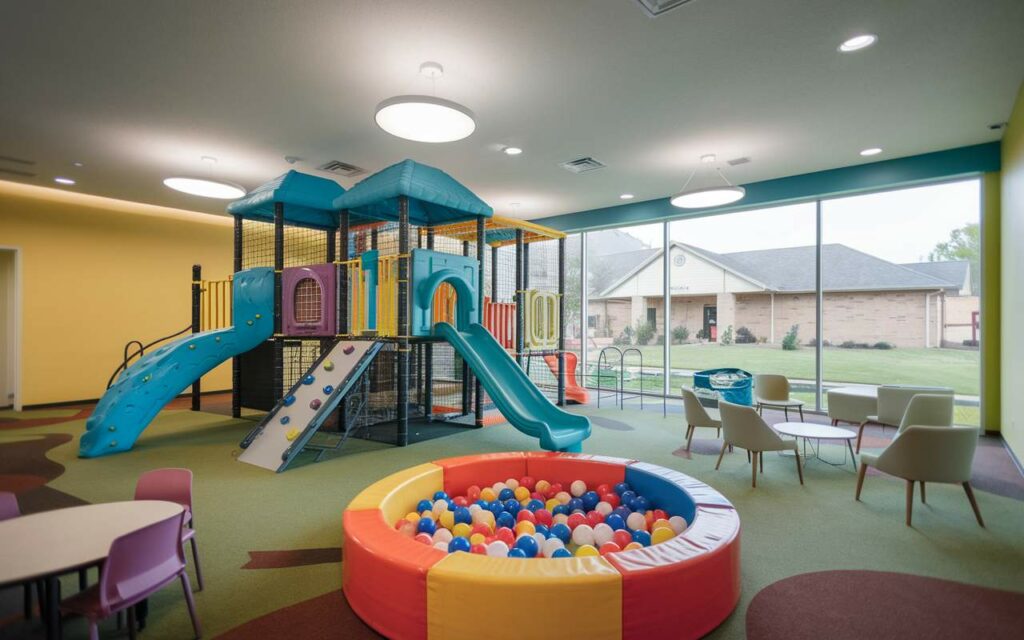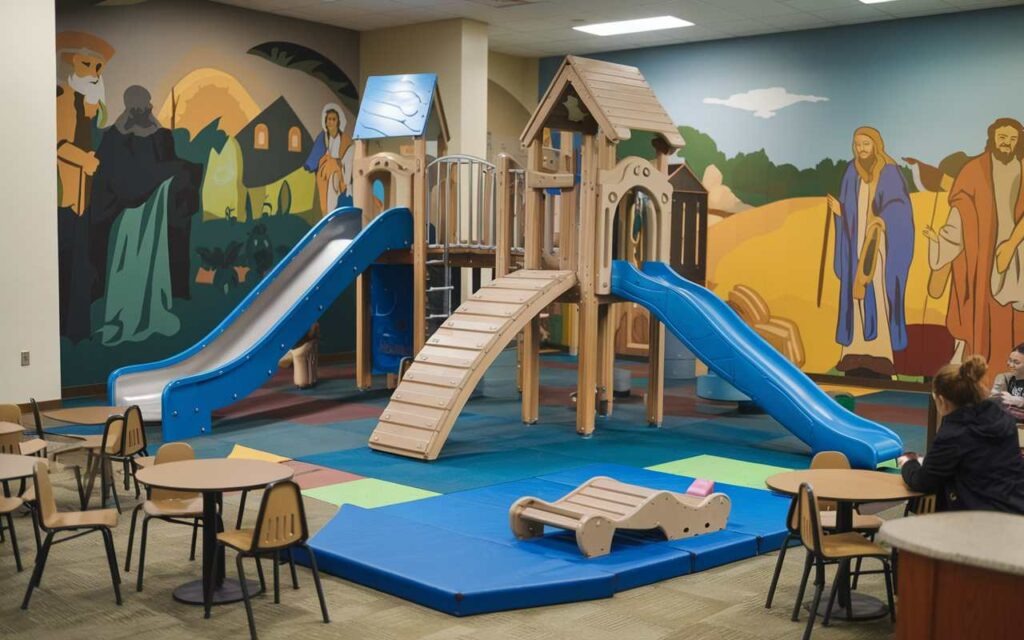Indoor playgrounds have surged in popularity, becoming a go-to for parents seeking a safe and engaging environment for their children. From neon-lit trampolines to imaginative play areas brimming with interactive exhibits, these indoor spaces offer a smorgasbord of benefits that extend far beyond just a good time. COSÌ, why are indoor playgrounds all the rage these days? Let’s dive into the myriad benefits of indoor play and discover how these vibrant play spaces are more than just a rainy day savior.

The Psychological Benefits of Indoor Playground

Indoor playground isn’t just about burning off excess energy—it’s a treasure trove of psychological perks that help shape well-rounded kiddos.
1. Boost Creativity and Imagination
Ever watched a child turn a cardboard box into a spaceship or a fort? Indoor play settings fuel this kind of imaginative play. With themed rooms and versatile play equipment, kids are encouraged to create entire worlds from their imagination. It’s like giving them a blank canvas and watching a masterpiece unfold.
2. Develop Problem-Solving Skills
Puzzle zones, escape rooms, and obstacle courses in indoor playgrounds are perfect for sharpening young minds. These activities challenge kids to think on their feet, strategize, and come up with solutions—all while having a blast. It’s problem-solving wrapped in fun, and it works wonders for their cognitive development.
3. Enhance Focus and Concentration
Interactive play areas designed with specific tasks help children develop better focus and concentration. Whether it’s stacking blocks in a certain pattern or navigating a tricky maze, these activities require sustained attention, improving their ability to concentrate over time.
The Cognitive Advantages of Indoor Play

Beyond the psychological, indoor play offers a bounty of cognitive benefits that are crucial for a child’s development.
4. Stimulate Brain Development
Engaging in varied play activities stimulates different areas of the brain. Ad esempio, sensory play zones with textured toys, water tables, and sandboxes can enhance neural connections, aiding in overall brain development. It’s like a gym session for their brain, with each activity working out a different mental muscle. Activities like puzzle-solving and memory games further boost cognitive functions by challenging children to think, remember, and solve problems.
5. Promote Language and Communication Skills
Indoor playgrounds are social hubs where kids interact with peers, making them fertile ground for developing language skills. Through role-playing games and interactive storytelling sessions, children learn to express themselves, follow instructions, and engage in meaningful conversations. Games like charades and group-based activities also promote language use and improve communication skills as children describe, narrate, and collaborate.
6. Encourage Critical Thinking and Innovation
Activities that require kids to think outside the box, like building complex structures with blocks or navigating an intricate rope course, nurture critical thinking and innovative mindsets. They learn to evaluate, adapt, and invent new ways to tackle challenges. Strategy-based board games like chess and logic puzzles also enhance their ability to think critically and innovatively. These activities teach children to plan ahead, consider different outcomes, and solve problems creatively.
The Physical Benefits of Indoor Play

Physical development is just as important as mental growth and indoor play delivers on this front too.
7. Improve Fine Motor Skills
Manipulating small objects, climbing, and other intricate movements in indoor play areas enhance fine motor skills. Whether it’s threading beads or navigating a mini rock wall, these activities refine their hand-eye coordination and dexterity.
8. Ensure Safe Physical Activity
Indoor playgrounds offer a controlled environment where kids can run, jump, and climb without the risks associated with outdoor play. Padded floors, soft play equipment, and strict safety protocols ensure that children can engage in physical activity safely, giving parents peace of mind.
Emotional Development
Emotional intelligence is nurtured through play, and indoor playgrounds provide a perfect backdrop for this growth.
9. Build Emotional Resilience
Facing challenges and sometimes failing at tasks like navigating an obstacle course builds resilience. Kids learn that it’s okay to fail and that perseverance pays off, teaching them emotional strength and grit.
10. Encourage Self-Expression and Confidence
Art stations, performance areas, and free play zones give children the freedom to express themselves. Whether they’re painting a masterpiece or putting on a puppet show, these activities boost self-confidence and allow them to explore their identities.
Social Skills
Indoor playgrounds are not just about solo play—they are bustling with social interactions that are crucial for developing social skills.
11. Foster Teamwork and Cooperation
Group activities and team challenges in indoor playgrounds teach children the value of teamwork. They learn to work together, share responsibilities, and achieve common goals, fostering a spirit of cooperation.
12. Learn Conflict Resolution
Disagreements are inevitable, but indoor play areas provide a supervised environment where kids can learn to resolve conflicts constructively. They learn important social skills like negotiation, compromise, and empathy.
13. Promote Inclusivity and Diversity
Indoor playgrounds bring together children from various backgrounds. This diversity exposes kids to different cultures, perspectives, and abilities, promoting inclusivity and teaching them to appreciate and celebrate differences.
Innovative Indoor Play Ideas and Activities
If you’re looking to spice up indoor playtime, here are some creative activities that can keep kids engaged and learning.
Crafts and DIY Projects
Craft stations with materials for making jewelry, painting, or building models can spark creativity and provide a sense of accomplishment. DIY projects are also great for enhancing fine motor skills and following instructions.
Interactive Storytelling Sessions
Storytelling sessions where kids can act out parts, use props, or even create their own endings can be incredibly engaging. This activity boosts language skills, imagination, and public speaking abilities.
Board Games and Puzzles
Classic board games and puzzles are excellent for developing strategic thinking and patience. They also provide a fun way for families to bond and learn together.
Conclusione
Indoor playgrounds offer a goldmine of benefits, from cognitive and physical development to emotional and social growth. They are vibrant ecosystems where children can explore, learn, and grow in a safe and stimulating environment. Understanding the benefits of indoor play can help parents and educators provide enriching experiences that support all aspects of a child’s development. So next time the weather turns gloomy, or you just need a fun day out, remember that an indoor playground might be just the ticket for a wholesome, enriching experience.
Domande frequenti
Q1: What age group benefits most from indoor playgrounds?
Indoor playgrounds are typically designed for children aged 1-12 anni, but many also have areas tailored for toddlers and older kids.
Q2: Are indoor playgrounds safe for toddlers?
Yes, most indoor playgrounds have designated areas with age-appropriate equipment and soft flooring to ensure the safety of toddlers.
Q3: Can indoor play help with my child’s academic performance?
Absolutely! Activities that stimulate brain development, enhance focus, and promote critical thinking can positively impact academic performance.
Q4: How do indoor playgrounds handle cleanliness?
Indoor playgrounds adhere to strict hygiene protocols, including regular cleaning of play equipment and sanitizing high-touch areas to maintain a clean environment.
Q5: Do indoor playgrounds offer activities for special needs children?
Many indoor playgrounds are inclusive and offer sensory-friendly areas and activities designed to accommodate children with special needs.













